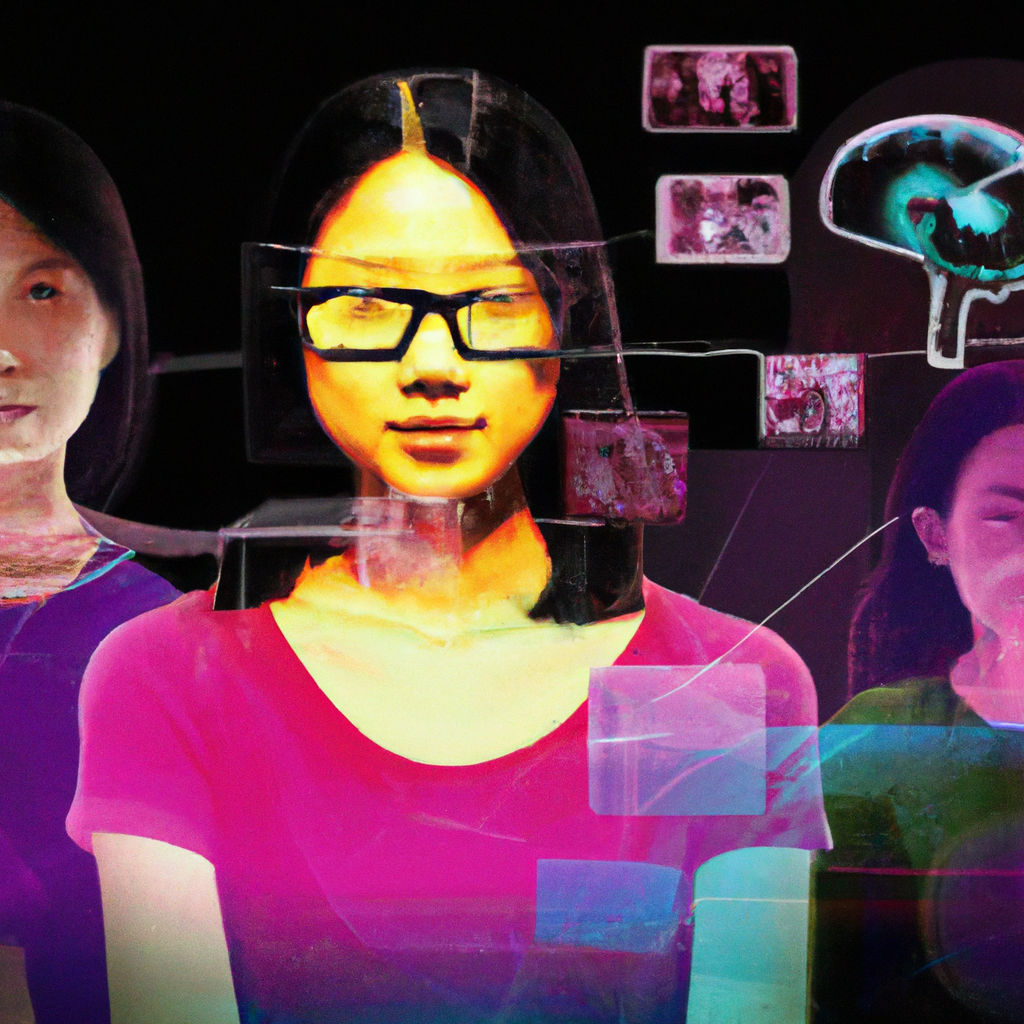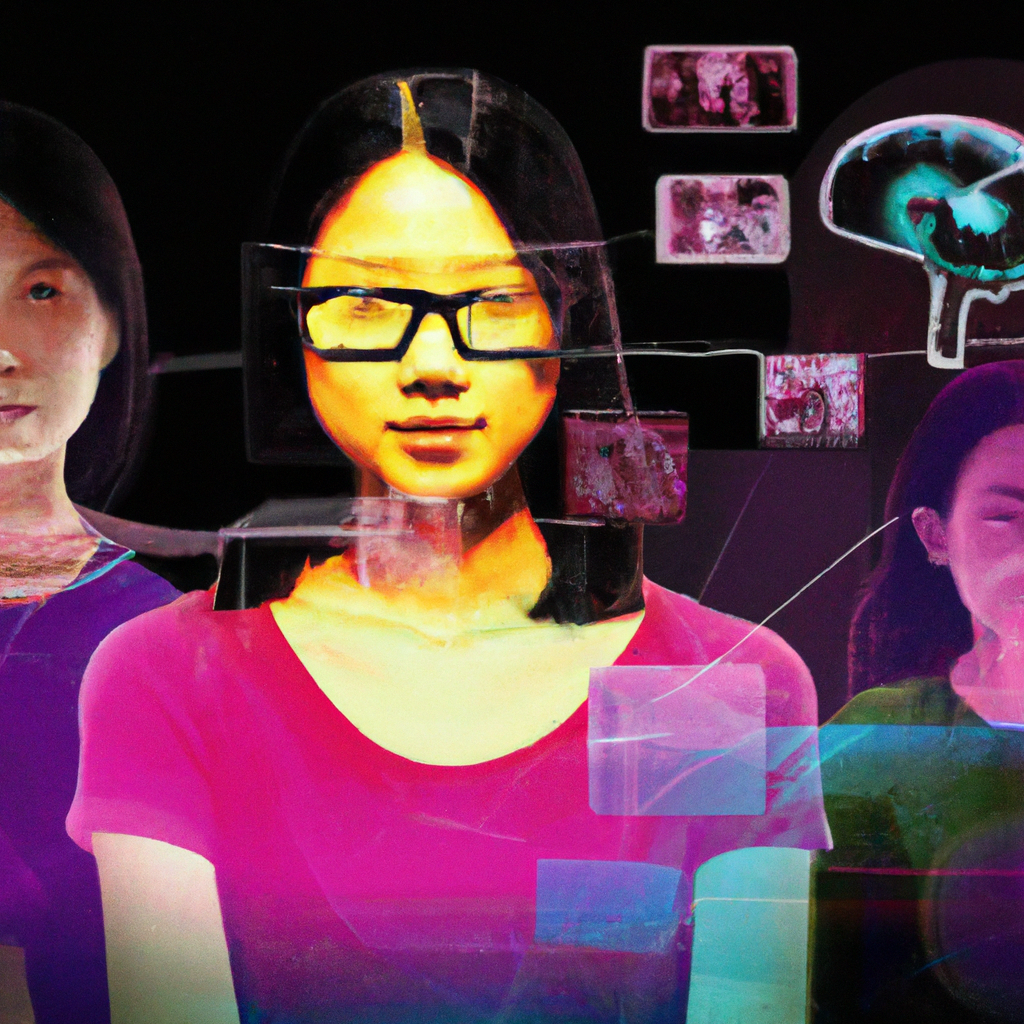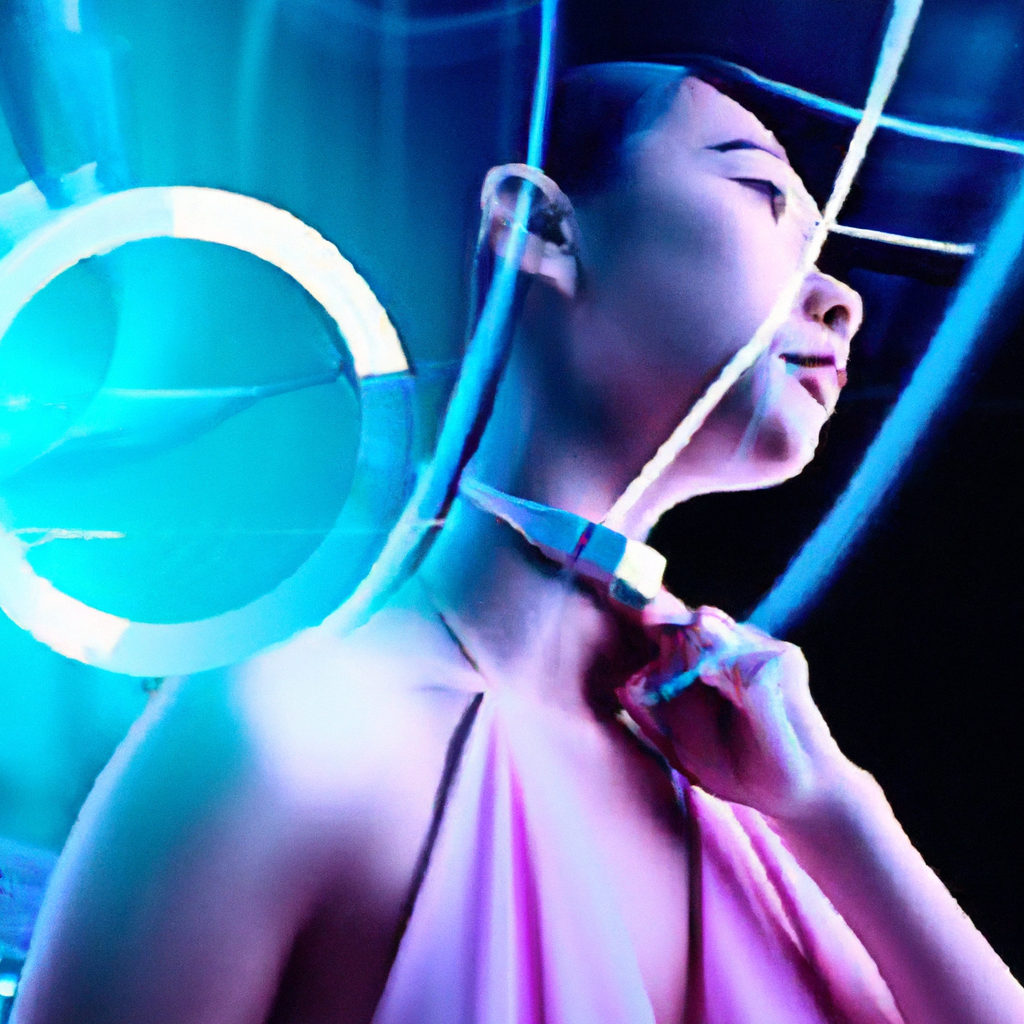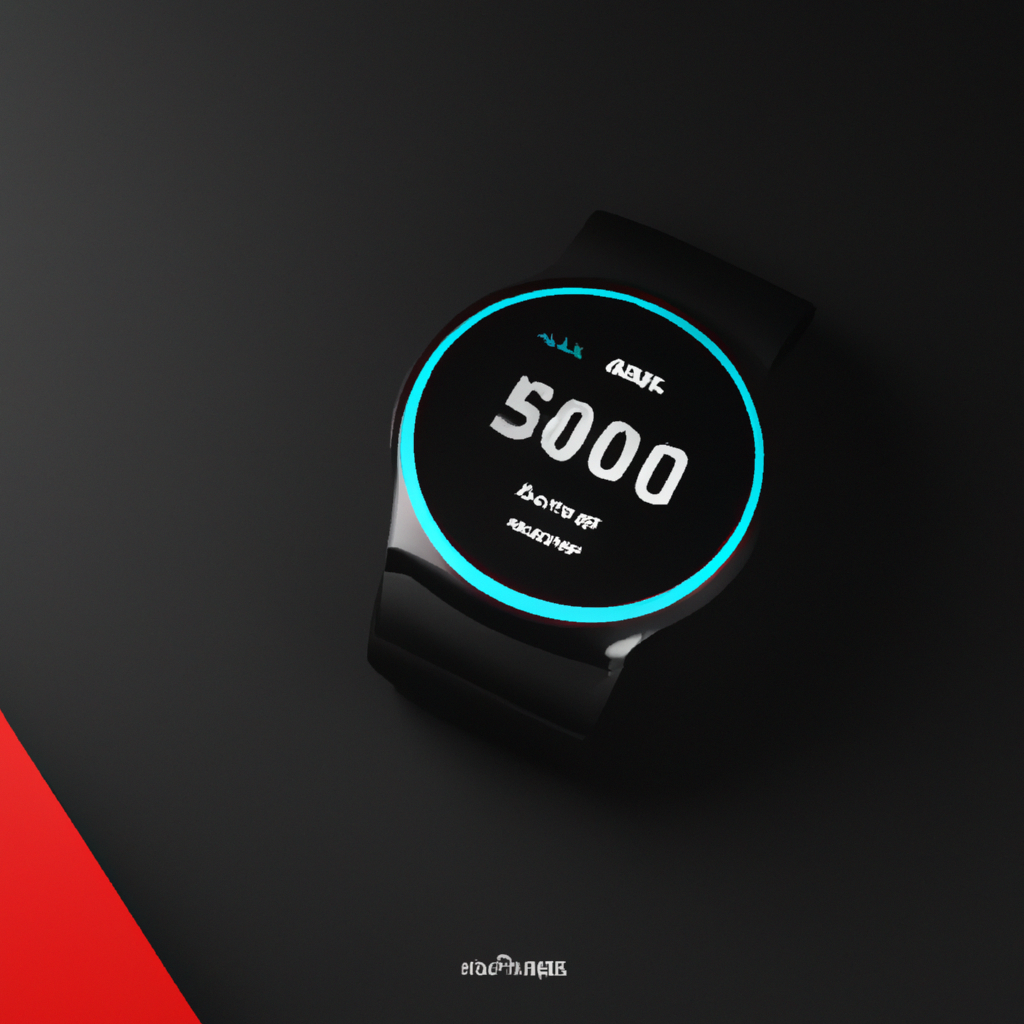Imagine a world where children’s everyday experiences are enhanced by cutting-edge technology. No, this is not the plot of a science fiction movie, but rather the exciting future of wearable tech for kids. With the rapid advancements in artificial intelligence, companies are now developing AI wearables that cater specifically to the younger generation. These devices go beyond simply tracking steps or monitoring heart rates; they aim to engage, educate, and entertain kids, providing them with interactive experiences like never before. From educational games to personalized learning, the future of wearable tech for kids promises to revolutionize how children interact with the world around them.

Understanding Wearable Tech and AI
Wearable technology has become increasingly popular in recent years, offering users a way to enhance their daily lives through the integration of technology into everyday objects. From smartwatches and fitness trackers to smart glasses and clothing, wearable tech has revolutionized the way we interact with our devices. But what exactly is wearable tech?
Basics of Wearable Tech
Wearable tech refers to electronic devices that can be worn on the body, either as accessories or as clothing items. These devices are designed to collect data and perform various functions, such as tracking physical activity, monitoring health parameters, providing notifications, and even assisting in navigation. Some of the most common forms of wearable tech include fitness trackers, smartwatches, and augmented reality glasses.
Introduction to Artificial Intelligence (AI)
Artificial Intelligence, or AI, is a branch of computer science that focuses on creating intelligent machines capable of mimicking human cognitive functions. AI technologies can analyze data, learn from it, make decisions, and even perform tasks that typically require human intelligence. This revolutionary technology has found its way into various industries, including healthcare, finance, and now, wearable tech.
How AI is Implemented in Wearable Tech
AI has the potential to greatly enhance the capabilities of wearable tech devices, making them more intelligent and adaptive to user needs. By incorporating AI algorithms and machine learning models, wearable devices can better understand user behavior, personalize recommendations, improve accuracy in health monitoring, and even predict future patterns or events. AI can also enable seamless integration with other smart devices, further expanding the functionality of wearable tech.
Current State of Wearable Tech for Kids
Wearable tech specifically designed for children is a growing market segment, offering parents a range of options to ensure the safety, health, and entertainment of their kids. Let’s take a closer look at the current state of wearable tech for kids.
Overview of Existing Kids’ Wearable Tech
In recent years, various companies have introduced wearable tech devices tailored to meet the unique needs of children. These devices often include features such as GPS tracking, emergency alerts, health monitoring capabilities, and even educational games. Some popular examples of kids’ wearable tech include smartwatches with parental controls, fitness trackers for kids, and GPS-enabled smart shoes.
Role of AI in Current Kids’ Wearable Tech
AI has already started to play a role in kids’ wearable tech, enabling devices to analyze data and provide valuable insights to parents and caregivers. By leveraging AI algorithms, these devices can detect patterns in children’s behavior, monitor their health parameters, and even offer personalized recommendations for activities or learning experiences. AI-powered kids’ wearable tech has the potential to revolutionize the way parents interact with their children’s well-being.
Benefits and Challenges in Current Scenario
The current scenario of kids’ wearable tech brings both benefits and challenges. On the one hand, these devices offer parents peace of mind by providing real-time tracking, safety features, and health monitoring capabilities. Kids’ wearable tech can also promote healthy habits and encourage physical activity through gamification. On the other hand, challenges arise in terms of data privacy, child safety, and the ethical implications of collecting and analyzing personal information. Striking a balance between the benefits and challenges is crucial for the future of kids’ wearable tech.
Future Scope of Wearable Tech for Kids
While the current state of kids’ wearable tech is already impressive, the future holds even more exciting possibilities. Let’s explore the potential advancements and technologies that will shape the future of wearable tech for kids.
Potential Advancements
In the coming years, we can expect significant advancements in kids’ wearable tech. These advancements may include improved AI algorithms for better data analysis, increased battery life for extended usage, enhanced biometric sensors for accurate health monitoring, and even the integration of augmented reality for immersive learning experiences. The future of kids’ wearable tech is full of potential.
Technologies Powering Future Wearable Tech
To bring about the innovations of the future, wearable tech for kids will rely on various cutting-edge technologies. These may include advancements in AI and machine learning, sensor technologies for accurate data collection, miniaturization of components for improved portability, and advances in energy harvesting for extended battery life. The convergence of these technologies will pave the way for the next generation of kids’ wearable tech.
Projected Growth and Adoption
As the demand for wearable tech continues to rise, the market for kids’ wearable tech is expected to experience significant growth. According to research, the global kids’ smartwatch market alone is projected to reach a value of $2.4 billion by 2027. This growth can be attributed to the increasing importance placed on child safety, the emphasis on healthy habits, and the potential educational benefits provided by wearable tech. The future is bright for kids’ wearable tech.
AI-Powered Health and Safety Wearables for Kids
One of the most promising applications of AI in kids’ wearable tech is its potential for enhancing health monitoring and safety features. Let’s explore how AI can revolutionize the way we ensure the well-being of children.
AI-Driven Health Monitoring Devices
AI-powered kids’ wearable tech can greatly improve health monitoring capabilities, helping parents keep track of their children’s well-being. By analyzing data collected from biometric sensors, these devices can provide real-time feedback on heart rate, sleep patterns, and physical activity levels. AI algorithms can also identify abnormal patterns and alert parents or healthcare providers when necessary, allowing for early intervention and proactive care.
Safety and Tracking Features in Future Devices
AI can also play a crucial role in ensuring the safety of children through wearable tech. GPS tracking capabilities, combined with AI algorithms, can enable parents to monitor their child’s location in real-time. Geofencing features can alert parents when their child enters or exits pre-defined safe zones. Additionally, AI algorithms can analyze historical data and predict potential safety risks, providing proactive suggestions for avoiding accidents or dangerous situations.
Impact on Kids’ Health and Wellness Sector
The integration of AI into kids’ wearable tech has the potential to revolutionize the health and wellness sector by empowering parents and caregivers with valuable insights and tools. By promoting healthy habits, encouraging physical activity, and offering personalized recommendations, AI-powered kids’ wearable tech can contribute to the overall well-being and development of children. As these devices continue to advance, the impact on the health and wellness sector will be significant.

Educational Role of Future AI Wearables
Beyond health and safety, wearable tech has the potential to transform the way children learn and engage with educational content. Let’s explore the emerging trends and possibilities in AI-assisted learning through wearables.
Emerging Trends in AI-Assisted Learning
AI-assisted learning is gaining momentum in educational settings, and wearable tech can play a pivotal role in this domain. AI algorithms can personalize learning experiences based on a child’s individual strengths, weaknesses, and interests. For example, wearable devices can adapt the level of difficulty in educational games based on real-time performance data, ensuring optimal engagement and progress. AI can also provide intelligent tutoring systems that offer personalized guidance and feedback.
Simulated Environments and VR for Enhanced Learning
The integration of virtual reality (VR) and augmented reality (AR) technologies into kids’ wearable tech holds great promise for immersive learning experiences. By creating simulated environments, wearable devices can transport children to historical events, natural habitats, or even outer space, offering a hands-on learning experience like never before. AI algorithms can also analyze a child’s engagement and adjust the virtual content in real-time, further enhancing the effectiveness of these educational tools.
Effects on Homework and Classroom Settings
AI-powered wearables can also have a significant impact on homework and classroom settings. Through real-time data analysis, wearable devices can provide insights into a child’s learning patterns, identifying areas that require further attention or offering alternative learning strategies. This data can be shared with educators, allowing for personalized instruction and targeted interventions. The future of AI-assisted learning through wearable tech has the potential to transform education as we know it.
Interactive Entertainment Wearables
Wearable tech for kids is not solely focused on health, safety, and education – it also extends to the realm of interactive entertainment. Let’s explore how AI can enhance the world of toys and gaming for children.
Smart Toys and Gaming Systems
Traditional toys and games are being reimagined through the integration of AI technology. Smart toys equipped with AI algorithms can interact with children, providing intelligent responses and adapting to their preferences. These toys can engage children in educational activities, storytelling, and even emotional companionship. Additionally, AI-powered gaming systems can offer personalized gaming experiences, tailoring the gameplay and challenges based on a child’s skill level and interests.
AI in Personalization of Entertainment
AI technologies can bring a new level of personalization to children’s entertainment. By analyzing data collected from wearable devices, AI algorithms can suggest content, games, and activities that align with a child’s interests and developmental stage. These recommendations can evolve over time as the AI learns from the child’s preferences and behaviors. The ability to personalize entertainment experiences can enhance engagement and foster creativity in children.
Social Impact of Interactive Entertainment Devices
AI-powered interactive entertainment devices have the potential to impact the social development of children. Smart toys that engage in conversational interactions and emotional support can provide companionship, especially for children who may have limited social interaction. Additionally, AI-powered gaming systems can facilitate multiplayer experiences, connecting children with their peers and fostering collaboration. However, it is essential to consider the potential ethical implications and ensure a balance between virtual and real-world social interactions.
Emotional and Behavioral Monitoring Wearables
Understanding children’s emotions and behavior patterns is crucial for their overall development. AI-powered wearables can provide valuable insights into these areas, opening up new possibilities for understanding and supporting children.
AI in Detection of Emotional States
AI algorithms can analyze various data inputs, such as heart rate variability, facial expressions, and voice inflection, to detect and decipher a child’s emotional state. Emotional monitoring wearables equipped with AI technology can provide real-time feedback to both children and parents, helping children recognize and manage their emotions. These devices can also alert parents when a child’s emotional state indicates potential distress or mental well-being concerns.
AI in Understanding Kids’ Behavior Patterns
Behavioral monitoring wearables can track and analyze a child’s actions, movements, and interactions to identify behavior patterns. By leveraging AI algorithms, these wearables can provide insights into a child’s routine, sleep patterns, and activity levels. This information can be valuable for parents, educators, and healthcare providers, enabling them to identify potential issues, tailor interventions, and provide targeted support for a child’s development.
Opportunities and Ethical Implications
The use of AI in emotional and behavioral monitoring wearables presents opportunities for enhancing children’s well-being and mental health support. However, ethical considerations must be taken into account. It is essential to establish strict data privacy measures, ensuring that sensitive information is securely stored and only accessible to authorized individuals. The responsible use of AI in this context also entails providing comprehensive support mechanisms and clear guidelines for parents and professionals.
Implications for Parental Control
Wearable tech for kids also brings implications for parental control and monitoring. Let’s explore how AI can assist parents in supervising their children’s activities while considering the concerns around privacy and safety.
Tools for Parental Control and Monitoring
AI-powered parental control tools can empower parents to monitor and manage their children’s interaction with wearable tech devices. These tools can enable parents to set usage limits, block inappropriate content, and receive notifications regarding their child’s activities. AI algorithms can also offer insights into a child’s online behavior, providing parents with an understanding of potential risks or concerns. By combining AI with parental control tools, parents can play an active role in ensuring their child’s safety and well-being.
AI in Assisting Parental Decisions
AI technologies can support parental decision-making by providing recommendations and insights based on data analysis. For example, AI algorithms can analyze a child’s activity levels, sleep patterns, and nutrition data to offer suggestions for promoting healthy habits. AI can also process information about a child’s location and alert parents when they stray from safe areas. By harnessing the power of AI, parents can make informed decisions that prioritize their child’s safety and well-being.
Concerns Around Privacy and Safety
It is essential to address concerns regarding privacy and safety when it comes to wearable tech for kids. The collection of personal data, especially when it involves children, must be accompanied by stringent privacy measures and transparent practices. Educating parents about the security measures in place and the purposes for collecting data is crucial. Additionally, wearable devices should undergo rigorous safety testing to ensure they meet the highest standards for children’s use.
Regulation and Policy Considerations for AI Wearables
As wearable tech for kids becomes more prevalent, regulations and policies must be in place to address potential risks and ensure responsible usage. Let’s examine the current policy framework and the future regulatory needs surrounding AI wearables for children.
Current Policy Framework
The current policy framework regarding wearable tech for kids varies across different countries and regions. Some countries have specific regulations pertaining to data privacy, child protection, and safety standards for wearable devices. However, the rapid advancement of technology often outpaces the development of policies, highlighting the need for proactive regulation and collaboration between industry stakeholders and policymakers.
Future Regulatory Needs
The future of AI wearables for kids will require updated policies and regulations to safeguard children’s rights, privacy, and safety. These regulations should address data protection, age-appropriate content, security measures, and ethical considerations related to AI algorithms. It is essential for policymakers to stay informed about technological advancements and collaborate with experts to establish comprehensive guidelines that foster responsible usage of AI wearables for children.
Role of Governments and Institutions
Governments and institutions play a crucial role in shaping the future of wearable tech for kids. Collaboration between regulatory bodies, research organizations, and industry stakeholders can lead to the development of best practices, standards, and guidelines. Governments should actively engage in dialogue with experts, parents, and educators to understand the potential benefits and risks associated with AI wearables. Together, they can create a safe and supportive environment for the growth and adoption of AI wearables for children.
Case Studies of Future Wearable Tech
To gain a better understanding of the potential of AI wearables for kids, let’s delve into some case studies that highlight successful implementations, lessons from failed attempts, and insights from ongoing innovation and research.
Successful Implementations of AI Wearables for Kids
One successful implementation of AI wearables for kids is the use of smartwatches with GPS tracking and emergency alert systems. These devices provide parents with real-time location updates, ensuring the safety of their children. Another example is AI-powered educational wearables that adapt to a child’s abilities and provide personalized learning experiences, enabling children to learn at their own pace. These success stories demonstrate the transformative power of AI in wearable tech for kids.
Lessons from Failed Attempts
There have been instances where attempts to integrate AI into wearables for kids have fallen short. Some failed attempts have been attributed to inadequate data privacy measures, lack of user-friendly interfaces, or devices that do not meet safety standards. Lessons learned from these failures emphasize the importance of thorough development processes, stringent testing, and addressing privacy concerns to gain the trust of parents and users.
Insights from Ongoing Innovation and Research
Ongoing research and innovation in the field of AI wearables for kids continue to shape the future of this technology. Researchers are exploring new methods of emotional monitoring, developing advanced AI algorithms for personalized learning experiences, and working towards seamless integration between wearables and other smart devices. The insights gained from these ongoing efforts contribute to the refinement and expansion of AI wearables for children.
In conclusion, wearable tech empowered by AI has the potential to revolutionize the way we ensure the well-being, education, and entertainment of children. From health monitoring and safety features to personalized learning experiences and interactive entertainment, the possibilities are vast. However, responsible implementation, privacy protection, and adherence to ethical standards are crucial for creating a future where AI wearables for kids truly enhance their lives. With continued innovation, collaboration, and robust regulatory frameworks, the future of wearable tech for kids looks promising, offering a host of benefits for children and their caregivers.



